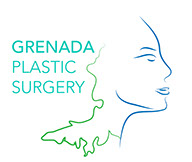Regenerative Medicine—Stem Cell Therapies
Facial Rejuvenation, Facial Scar Therapy, Fat Grafting, Breast Augmentation, & Chronic Wound Therapy
Regenerative medicine refers to a diverse set of therapies to restore irreparable tissue. The scope of regenerative medicine is broad and is presently an active area of innovation inside and outside of plastic surgery. In 2001, researchers at UCLA reported1 the discovery of adult stem cells in adipose tissue (fat). Since that time 15 years ago, research into and knowledge about adipose stem cells has increased exponentially. Part of this is due to the ease of access through liposuction and the minimal processing of adipose tissue to obtain adult stem cells. This is in comparison to bone marrow derived stem cells or embryonic stem cells which also have ethical, legal, and political concerns. To meet the definition of a stem cell, the cell must be able to self-renew and differentiate among different lineage pathways such as adipose (fat), cartilage, muscle, nerve, or bone. Tissue engineering focuses on taking cells of this nature and forming a purposeful and functioning organ system. Uniquely, stem cells live when other cells may die. This is possible because stem cells release proteins into the environment that promote new blood vessel growth (neoangiogenesis) when oxygen in the environment is poor. Thus, applications for stem cells in plastic surgery are actively being researched throughout the world for facial rejuvenation, facial scar therapy, healing of chronic wounds, and increasing the survivability of fat grafts placed for breast augmentation and reconstruction.
Published in Plastic & Reconstructive Surgery in 2015, researchers from Brazil and Italy (Gino Rigotti) enriched fat grafts with stem cells and placed them in the face beneath the skin2. When the skin was analyzed under a microscope 3 months later the skin was rejuvenated! Findings demonstrated increased elastin (protein in skin), decreased elastosis (sign of aging), increased hydration, increased blood vessel content, and modification in collagen organization. Researchers concluded that stem cell therapy for facial rejuvenation is promising. Additionally, stem cell enriched fat grafts have been found to aid in the cosmesis of scars of the face3.
Standard fat grafting without stem cell enrichment in plastic surgery is commonplace. However, at best only 70% of the fat graft survives when placed with the appropriate technique. This is because adipocytes (fat cells) in the middle of the fat bolus delivered to the breast, face, or wound are distant from the vital nutrients and much needed oxygen. Researchers have found that when stem cells are supplemented to the fat graft this leads to improved survival of the fat graft. A report3 from Italy demonstrated facial scar patients treated with stem cell enriched fat graft retained 63% of the graft while the control group (fat graft with no added stem cells) retained 39% at 1 year follow up. In Japan, 40 patients underwent cosmetic breast augmentation with stem cell enriched fat grafts4. The authors concluded that stem cell enriched fat grafting was superior to standard fat grafting because of improved fat graft survival.
Presently, the United States Food and Drug Administration (FDA) prohibits the process of enriching a fat graft with stem cells. Procedures of this nature are performed for research purposes only. The essential question that remains to be answered is the relationship of adipose derived stem cells with tumor growth. Present research is contradictory with some studies stating stem cells could promote tumor growth while other studies demonstrate that stem cells inhibit tumor growth. Thus, stem cell application for reconstructive and cosmetic purposes has proceeded cautiously under research approval in the USA. Encouragingly, a literature review of the studies published on adipose derived stem cells stated no major adverse effects have been reported in studies throughout the world5. There has never been a reported case of tumor outgrowth from a fat stem cell. Additionally, questions that remain to be answered are the following: what is the best way to process the adipose tissue to obtain the stem cells and how many stem cells to enrich the fat graft with?
To read the stem cells and fat grafting position statement of the American Society of Plastic Surgeons and the American Society for Aesthetic Plastic Surgery click here: http://www.plasticsurgery.org/Documents/Health-Policy/Positions/statement-2011-stem-cells-fat-grafting.pdf
In conclusion, fat stem cells are an active area of research with much potential to slow the aging process, increase fat graft survival for breast augmentation, heal chronic wounds, and provide a therapy for facial scars. My vision for Grenada Plastic Surgery is to offer stem cell enriched fat grafts in an ethical and fully disclosed manner. I believe adipose derived stem cells hold much promise for plastic & reconstructive surgery whether it be for cosmetic or reconstructive application.
Luke G. Gutwein, MD
Plastic & Reconstructive Surgeon
General Surgeon
St. Augustine’s Medical Services
American Board of Surgery Certified
Professor of Anatomy
St. George’s University
Grenada, West Indies
DrGutwein@GrenadaPlasticSurgery.com
References Cited
- P. A. Zuk, M. Zhu, H. Mizuno, J. Huang, J. W. Futrell, A. J. Katz, P. Benhaim, H. P. Lorenz, and M. H. Hedrick, "Multilineage cells from human adipose tissue: implications for cell-based therapies," Tissue engineering 7 (2), 211-228 (2001).
- L. Charles-de-Sa, N. F. Gontijo-de-Amorim, C. Maeda Takiya, R. Borojevic, D. Benati, P. Bernardi, A. Sbarbati, and G. Rigotti, "Antiaging treatment of the facial skin by fat graft and adipose-derived stem cells," Plast Reconstr Surg 135 (4), 999-1009 (2015).
- P. Gentile, B. De Angelis, M. Pasin, G. Cervelli, C. B. Curcio, M. Floris, C. Di Pasquali, I. Bocchini, A. Balzani, F. Nicoli, C. Insalaco, E. Tati, L. Lucarini, L. Palla, M. Pascali, P. De Logu, C. Di Segni, D. J. Bottini, and V. Cervelli, "Adipose-derived stromal vascular fraction cells and platelet-rich plasma: basic and clinical evaluation for cell-based therapies in patients with scars on the face," The Journal of craniofacial surgery 25 (1), 267-272 (2014).
- K. Yoshimura, K. Sato, N. Aoi, M. Kurita, T. Hirohi, and K. Harii, "Cell-assisted lipotransfer for cosmetic breast augmentation: supportive use of adipose-derived stem/stromal cells," Aesthetic Plast Surg 32 (1), 48-55; discussion 56-47 (2008).
- P. Gir, G. Oni, S. A. Brown, A. Mojallal, and R. J. Rohrich, "Human adipose stem cells: current clinical applications," Plast Reconstr Surg 129 (6), 1277-1290 (2012).


<
>
Luke Gutwein, MD
Plastic & Reconstructive Surgeon
General Surgeon
St. Augustine's Medical Services
American Board of Surgery Certified
Professor of Anatomy
St. George's University
Grenada, West Indies

2017 © Grenada Plastic Surgery, All rights reserved.
